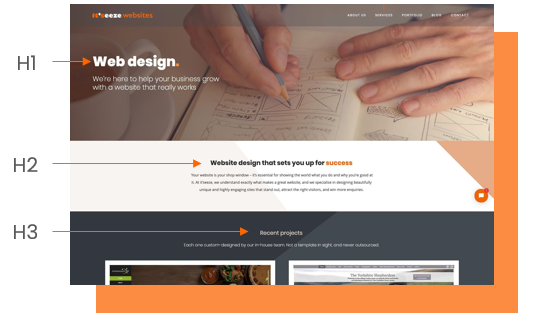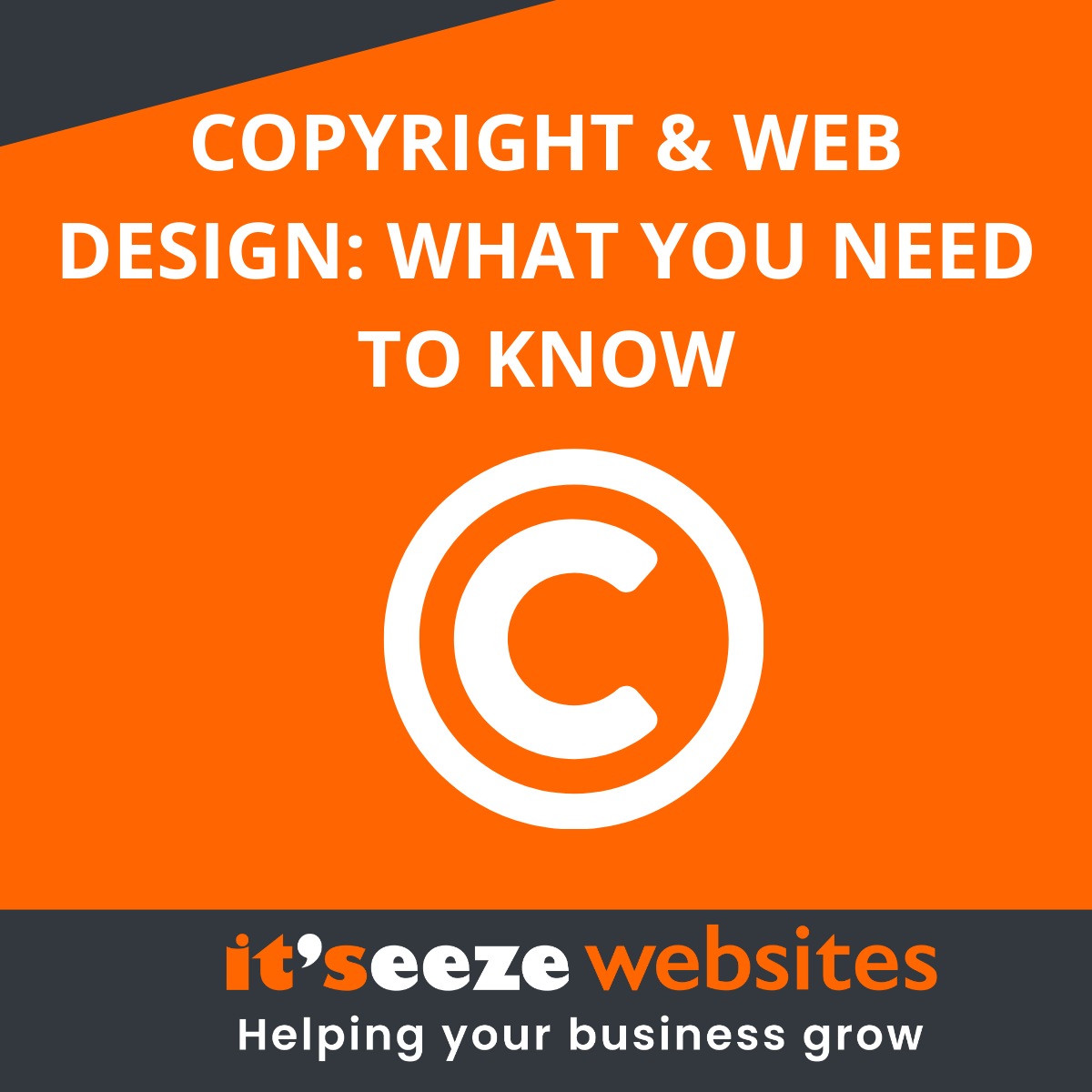How do search engines work?
SEO - HOW DO SEARCH ENGINES WORK?
Search engines want to provide users with the most relevant results possible in relation to their search query
3 step process:
Crawling – Search engines send out robots to find new and updated content.
Indexing – Google processes and stores the content in its index
Ranking – Algorithms are used to determine which pages to show in search
Algorithms consider many different ranking factors when pulling websites through into search results
Google’s algorithms are updated all the time – can affect rankings
ON PAGE - SEO FACTORS
Keyword research is a vital part of any SEO strategy
Keywords should be used in:
Metadata
URLs
Headings
& throughout your website content
Use long-tail keywords to target more specific, less competitive search queries
Aim to target around 5-10 long-tail keywords
Keywords show search engines that your website is relevant for search results
METADATA

HEADINGS

Easy for both visitors and search engines to navigate and understand
H1 is the page’s main heading – only one per page
H2 tags used to separate out different sections of a page
H3 tags then used to organise the text in each of these sections into sub-sections
OTHER
Internal links - help search engines crawl your website more efficiently
Alt text – help search engines understand what each image is showing
Page speed – Google favours websites that load quickly
URLs – each page should have a clear and concise URL
Content – Google loves websites that are regularly updated
Responsive – mobile-friendly websites are more likely to rank higher

OFF PAGE - SEO FACTORS
LINKS
These act as votes of confidence in your website
The more links you have, the more likely your site is to contain quality content
Need to be from authoritative sources
Have to be earned
Links should be relevant, from topically similar websites
Links will naturally increase over time
Avoid black-hat techniques for gaining links

OTHER

Reviews – trust is key to ranking well
Citations – e.g. business directories. Consistent citations are important
Domain age – the older your website is, the better
Social media –increase opportunities for links by spreading your content
WHITE HAT SEO
Key principles:
Provide high-quality, relevant content
Create a user-friendly website – fast loading and mobile-friendly
Make your website easy to navigate
Keep metadata clear and easy to understand
White hat SEO is sustainable, with long-term results
BLACK HAT SEO
Risky and unethical – can lead to website being penalised or permanently banned
Common practices to avoid:
Keyword stuffing
Hidden content
Thin content
Duplicate content
Paid links
Fake reviews
6 Tips to help improve your website ranking
1. Make sure your website is fully responsive (mobile friendly), loads quickly and has an SSL Certificate
2. Do your keyword research. What are your customers likely to type into Google?
3. Pick one keyword (product/service) per page. Create high quality content around that keyword.
4. Put keywords into headings, page titles and image alt tags, where appropriate.
5. Create shareable content that will generate links i.e. infographics.
6. Ask your customers for online reviews.
If you want to find out more about how SEO can help improve your website rankings, then get in touch.
Share this post:



